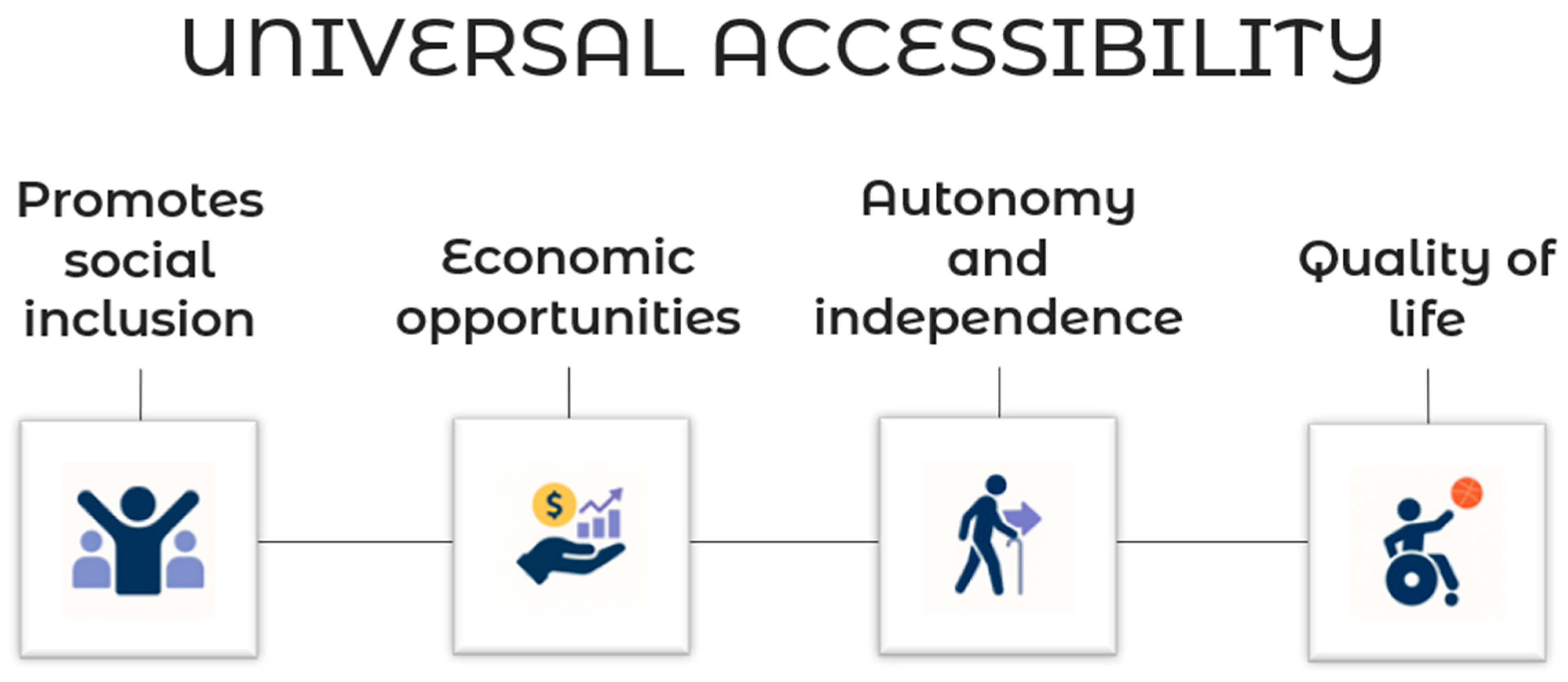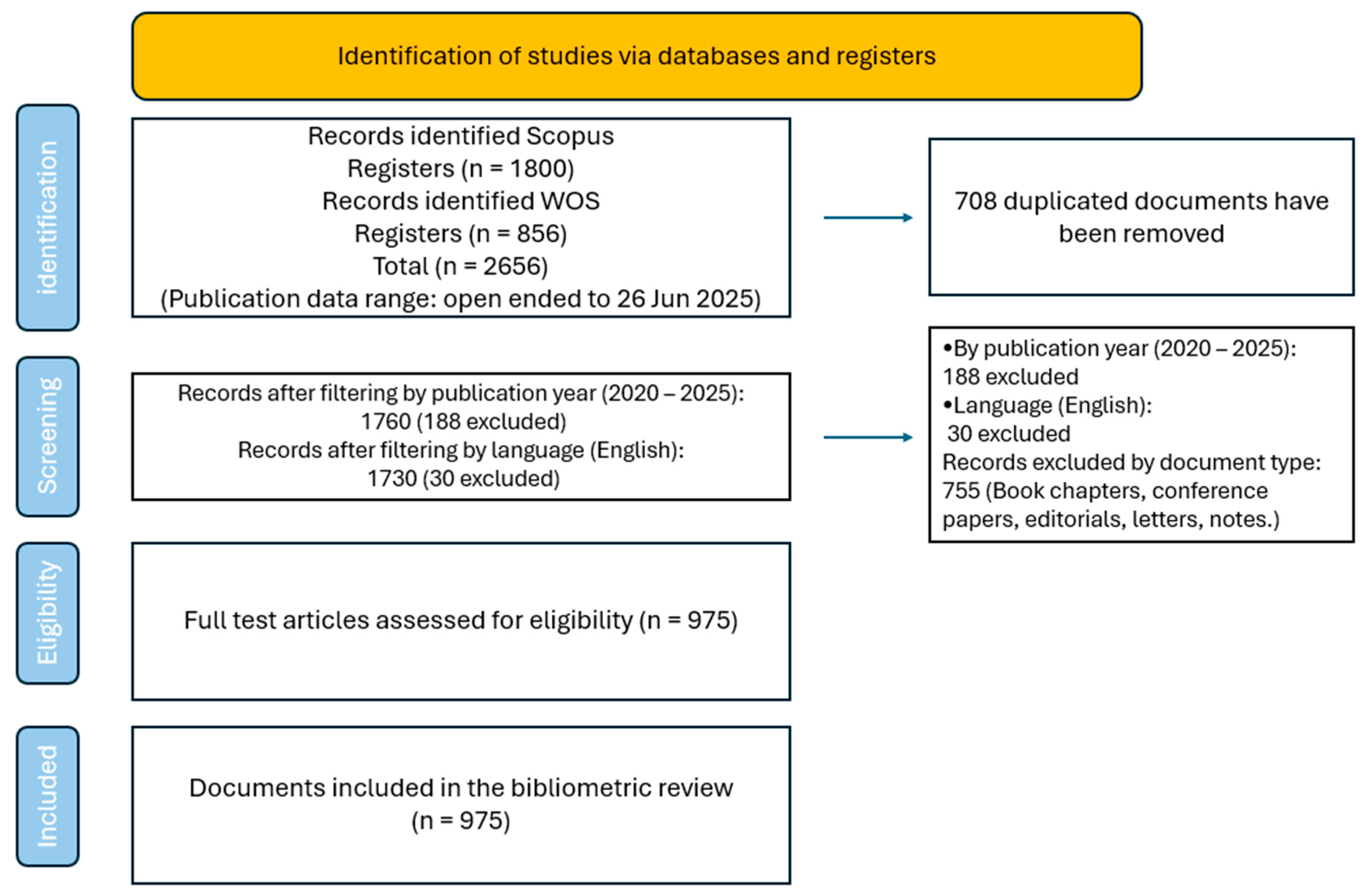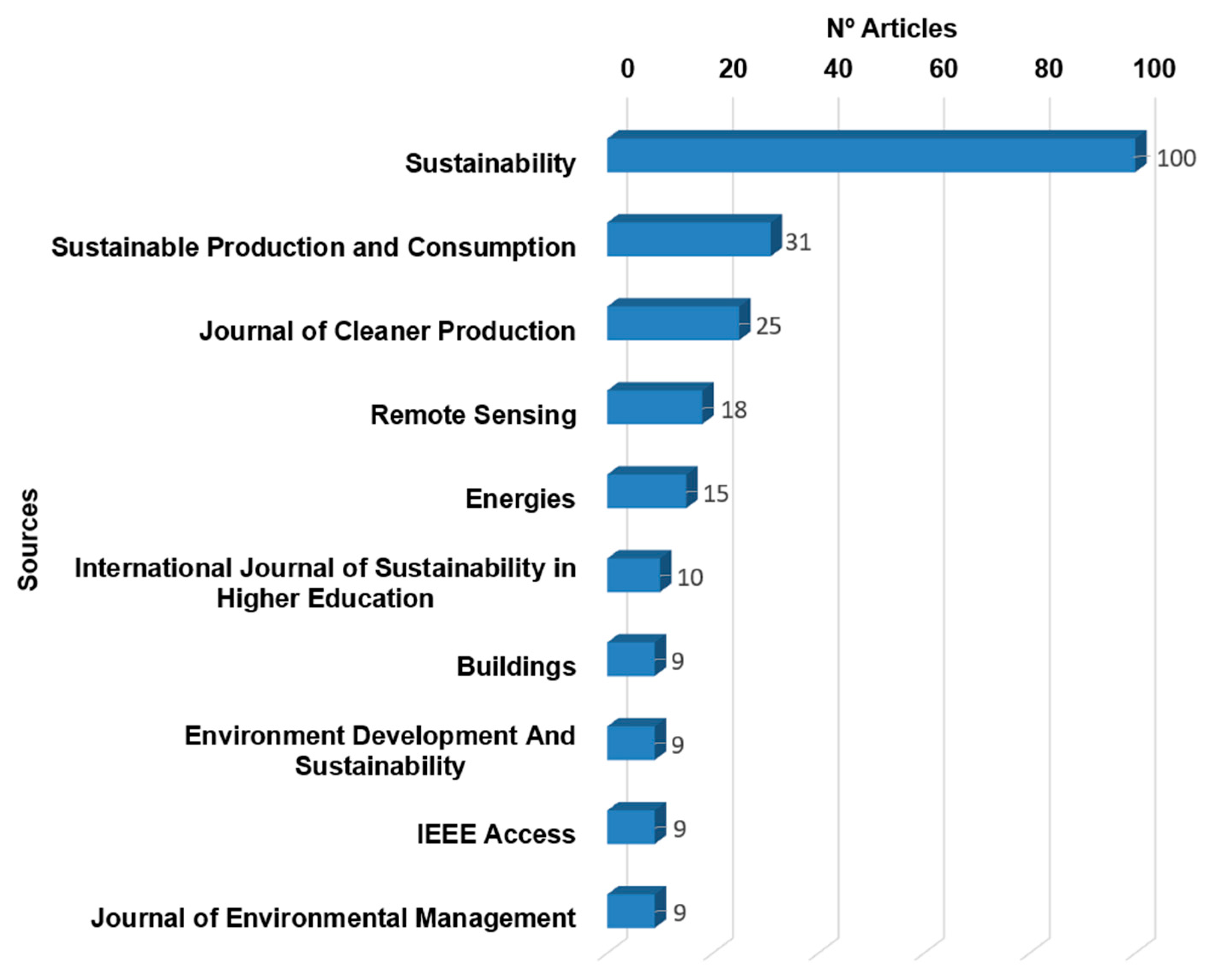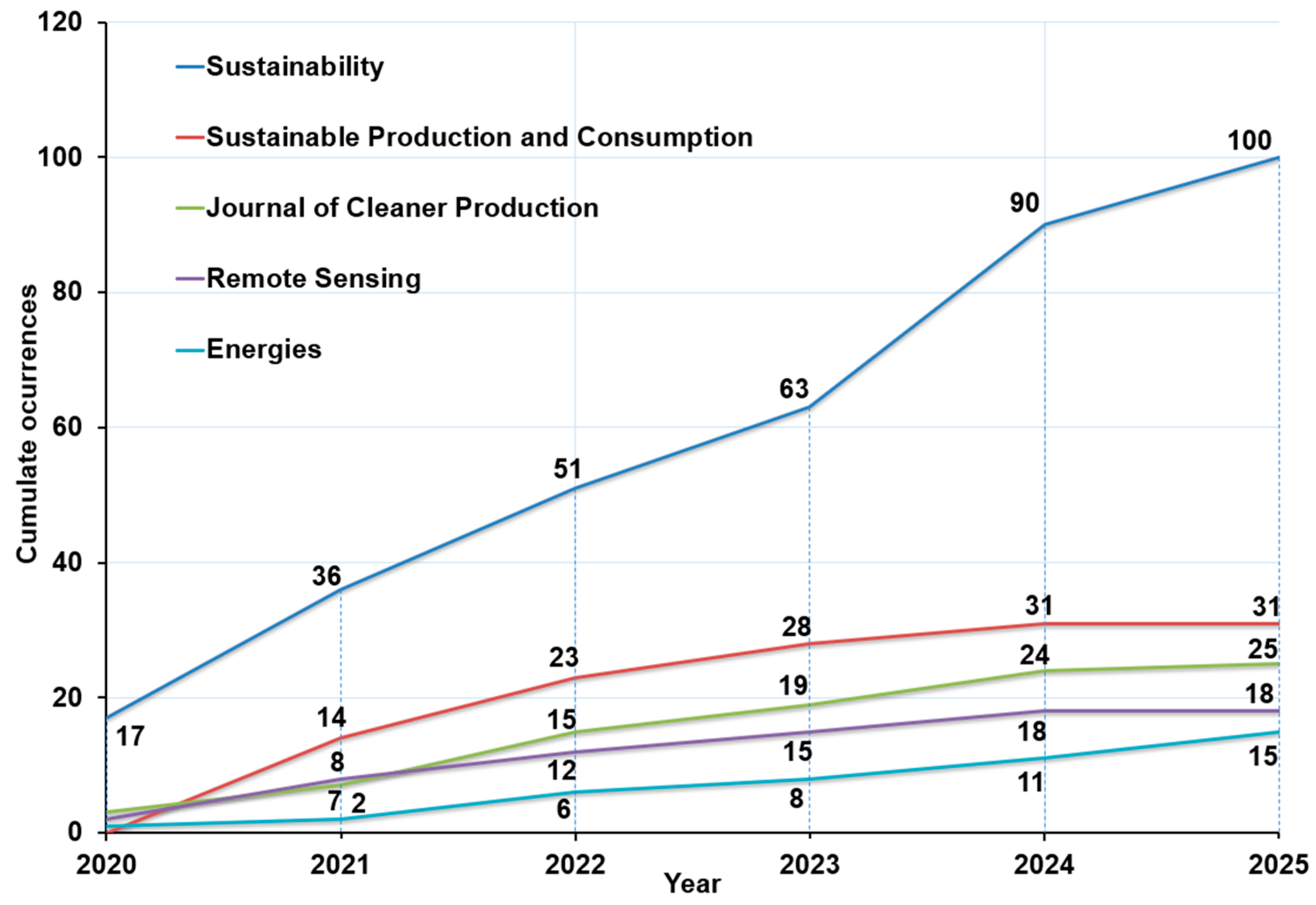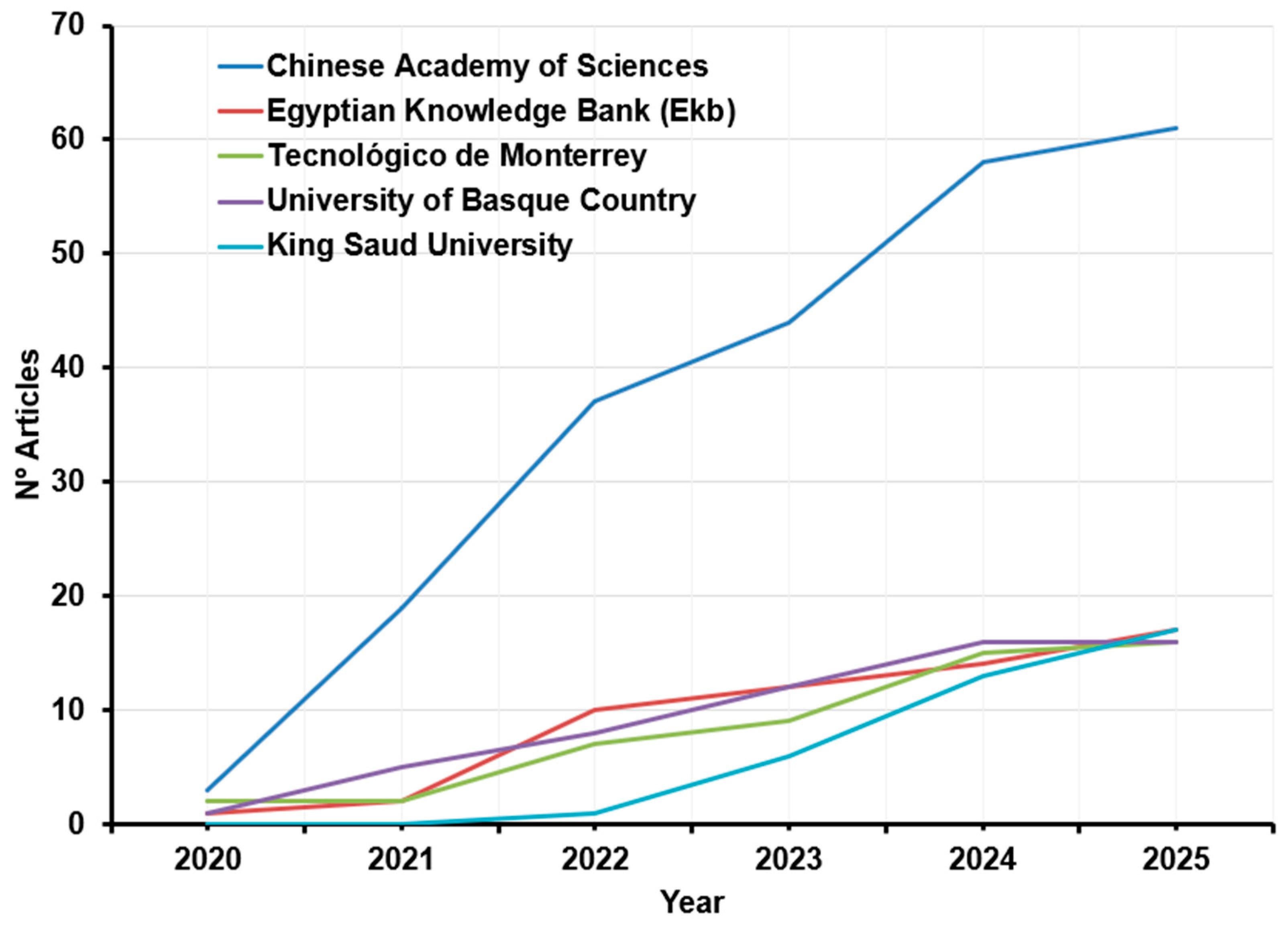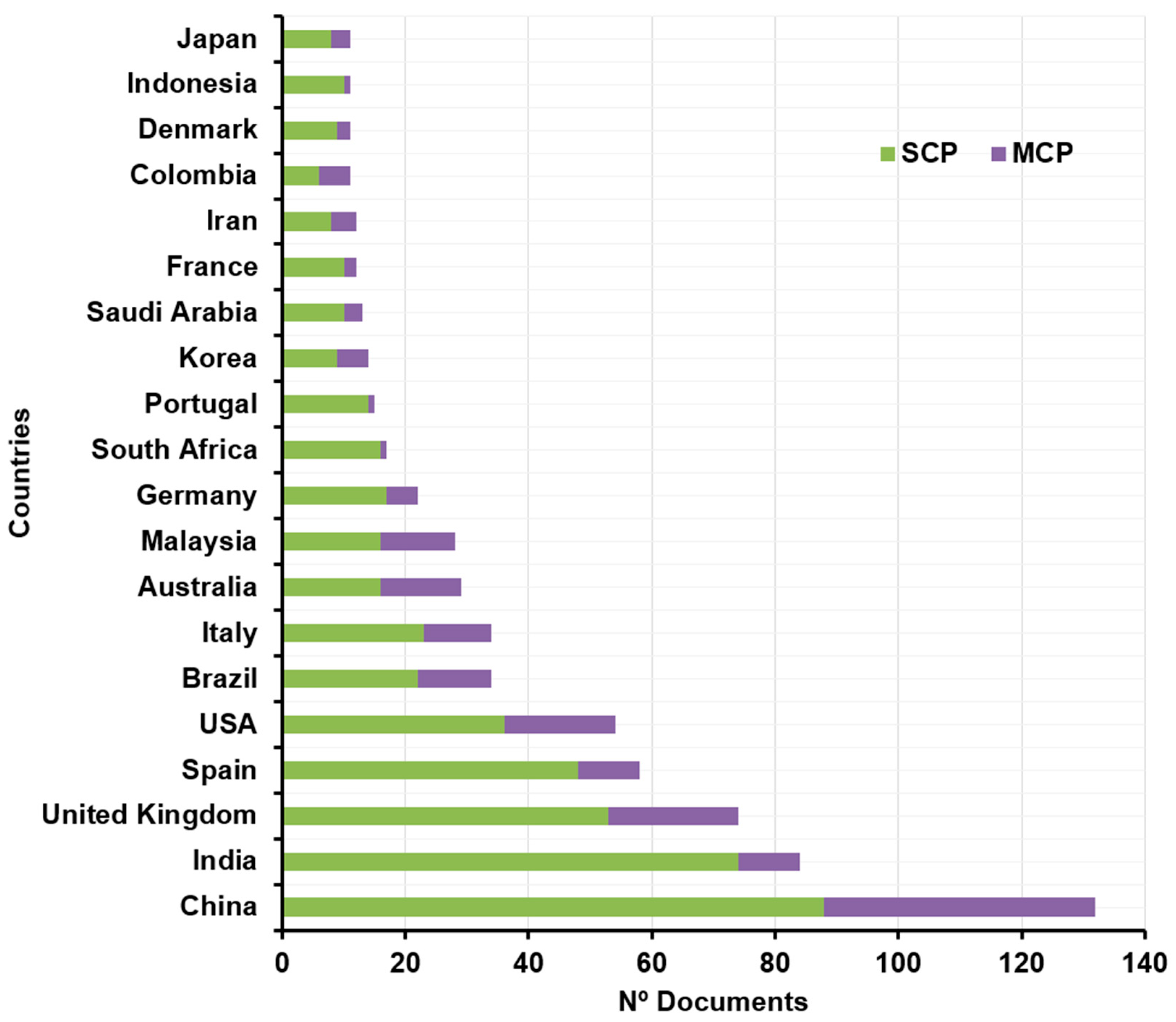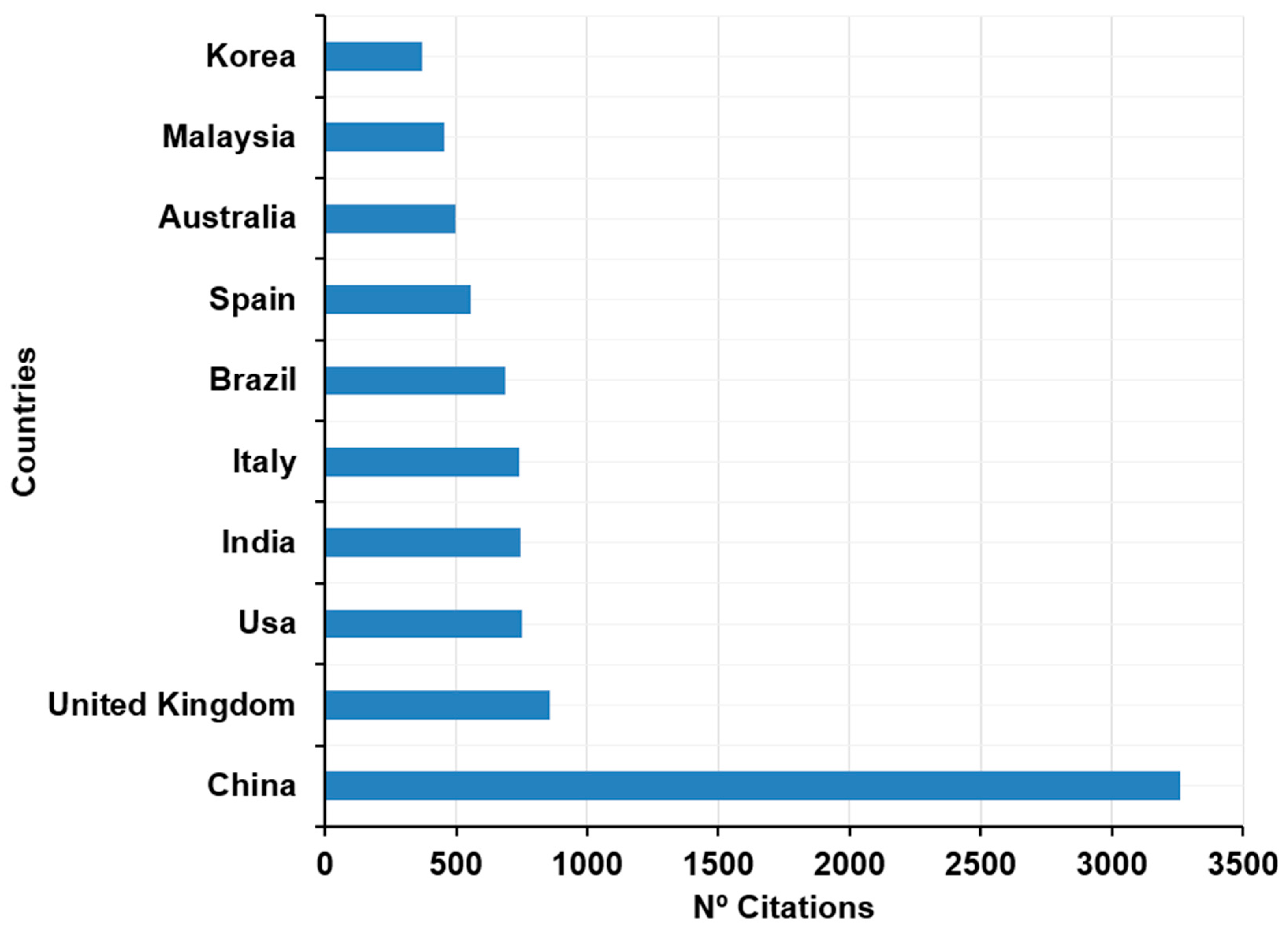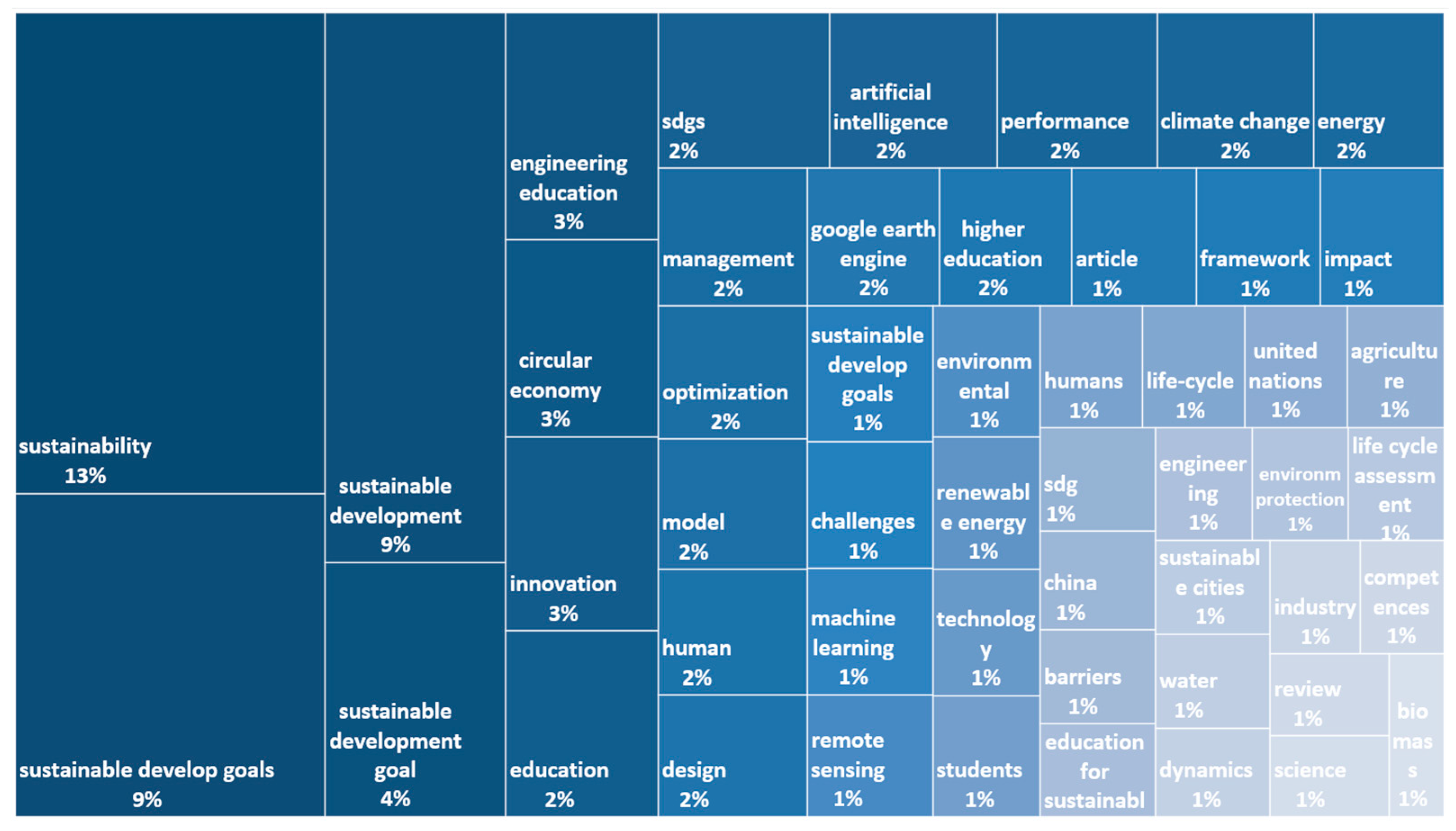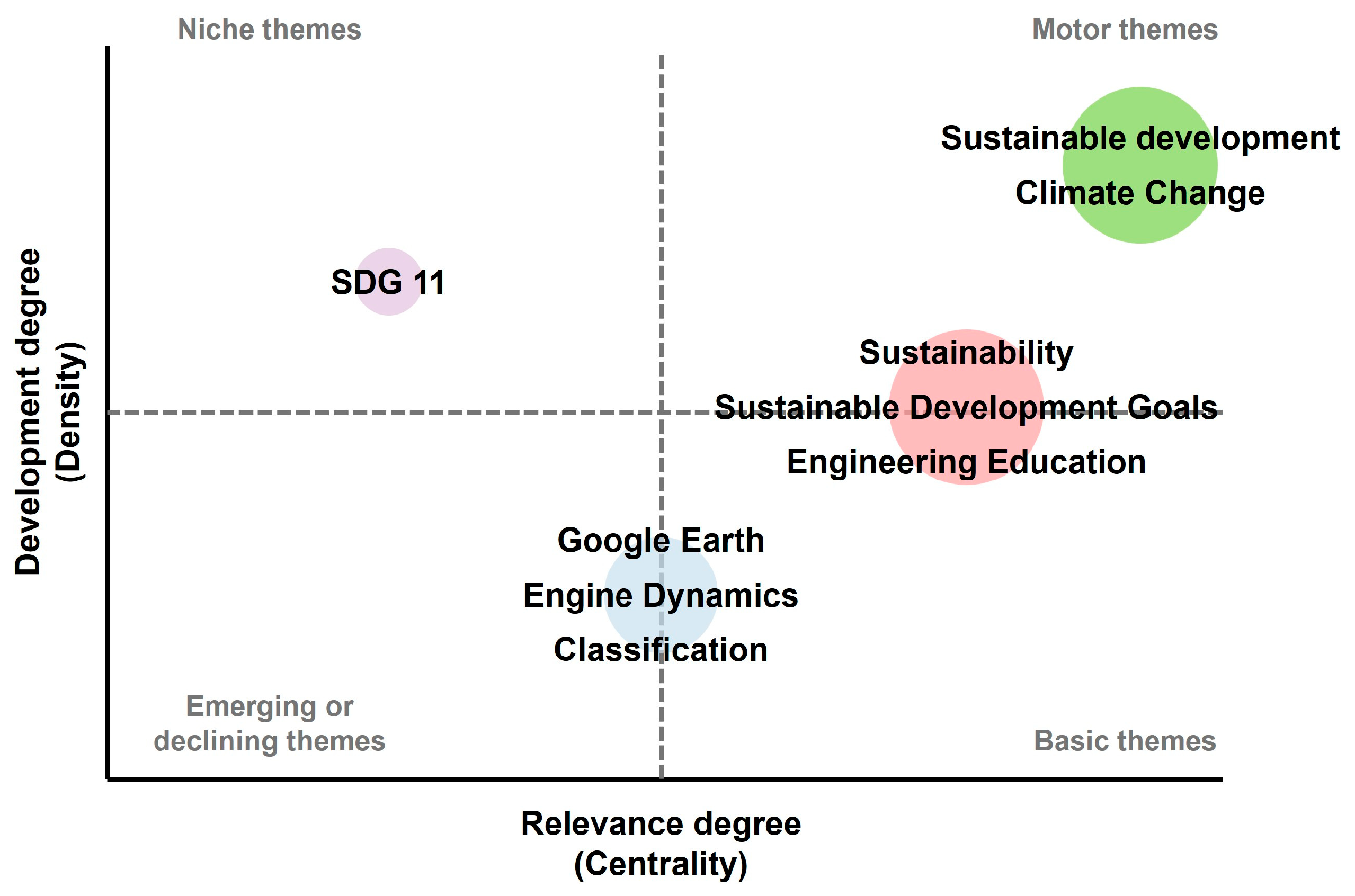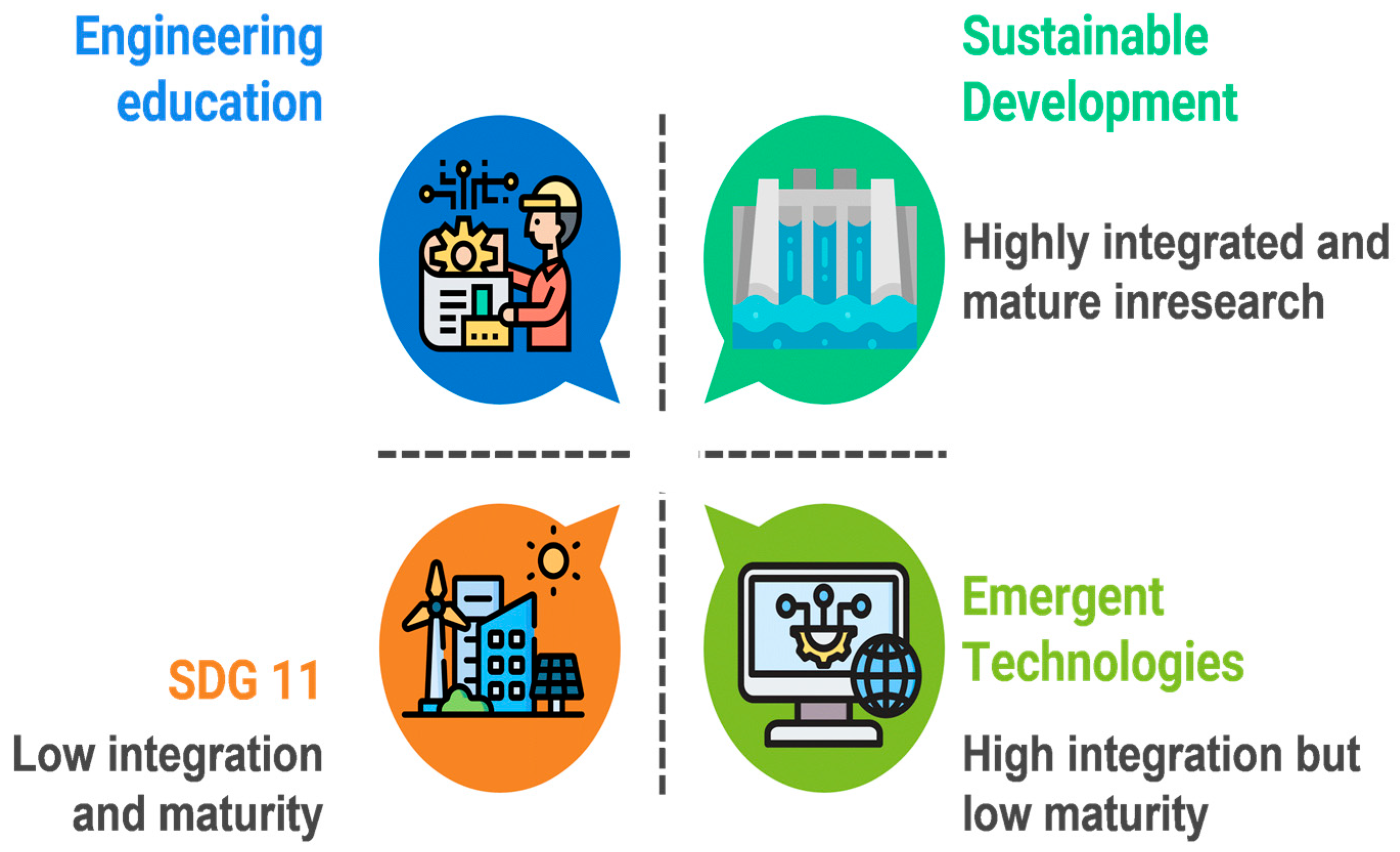1. Introduction
The 2030 Agenda, created by the Member States of the United Nations in 2015 in order to develop a global plan to guide humanity towards a prosperous and healthy future for the benefit of all, encompasses economic, social, environmental, and inclusive dimensions [
1]. This roadmap includes 17 Sustainable Development Goals (SDGs) that set targets to be achieved before 2030. Among the aims to be achieved are the elimination of poverty, the protection of the environment, sustainability, and the inclusion of people with disabilities [
2].
Universal accessibility (UA), as a fundamental principle to which all people are entitled, is a structural part of the 2030 Agenda. This concept seeks to eliminate architectural, physical, and sensory barriers, as well as to promote a comprehensive transformation and the massive development of inclusion, in such a way that it allows all people to be part of society, regardless of their abilities [
3,
4].
UA is closely related to SDG 10, which seeks to reduce inequalities. This SDG promotes the social, economic, and political inclusion of all people, regardless of their age, sex, disability, race, ethnicity, origin, religion, or economic status [
5]. UA contributes directly to this goal by allowing people with disabilities to live in equality, freedom, and independence, fully participating in all aspects of life. By eliminating physical, sensory, and cognitive barriers, UA fosters equal opportunities and the participation of all citizens in society, thus reducing existing inequalities [
6].
In addition, UA is also related to SDG 11, Sustainable Cities and Communities. UA plays a fundamental role in the creation of inclusive and safe urban environments for all [
7]. This goal seeks to provide access to safe, affordable, and accessible transport systems, as well as inclusive public spaces, paying special attention to the needs of vulnerable people, such as people with disabilities and older people [
8,
9]. The implementation of UA measures in urban design, architecture, and public services contributes directly to the achievement of these goals, creating more livable and equitable cities for all their residents [
10]. In this way, UA becomes a key element to achieving sustainable communities that leave no one behind.
UA refers to the creation of environments, products, and services that can be used by all people, regardless of their physical, sensory, or cognitive abilities. This concept goes beyond the simple elimination of physical barriers, encompassing a comprehensive dimension that includes aspects such as understanding, usability, and practicality of all elements of society. The main objective is to move towards equal opportunities, allowing all people to fully participate in community life and improve their quality of life [
11].
The implementation of UA entails numerous benefits both for people with disabilities and for society in general. Among these are included (
Figure 1): (i) the promotion of social inclusion [
12,
13]; (ii) the opening of new economic opportunities [
14]; (iii) the improvement of quality of life [
11]; and (iv) the fostering of autonomy and independence. In addition, UA benefits people with disabilities, along with other groups such as older people, families with young children, and people with temporary injuries, thus contributing to creating a more inclusive and equitable society for all [
15].
UA represents the integration of all people regardless of their disabilities. This concept brings benefits to people from all backgrounds, from children to the elderly, both men and women. UA emanates social transformation that creates inclusive environments and reduces structural inequalities. The benefits generated by this concept are significant and cover various perspectives such as the social sphere, the improvement of quality of life, efficiency and resource savings, and the positive impact on sustainability [
15].
The independence of people improves, and with it their quality of life, promoting a healthier quality of life for them and their environment [
16]. UA contributes to sustainable urban development by optimizing resources and ensuring that technological progress benefits all citizens. [
17].
The collaboration between engineering and other disciplines is transforming the way environments, products, and services are designed and built, ensuring that they are accessible to everyone. This perspective benefits people with disabilities, together with contributing to the creation of a more inclusive and equitable society [
18]. Engineering plays a crucial role in fostering UA, contributing significantly to improving the quality of life of people with disabilities and promoting their inclusion in society [
19]. Through the design and construction of accessible devices, systems, and environments, engineering facilitates the performance of daily, work, and educational activities for people with diverse abilities [
20]. Engineering professionals play a decisive role in achieving the goal of UA for all citizens, encompassing areas such as urban planning, building, rehabilitation, transportation, industrial facilities, and ICT [
21].
In relation to all the above, this review offers a panoramic and rigorous view of the role of engineering in the promotion of more inclusive, sustainable, and equitable societies. The trends and contributions of engineering research to the achievement of the SDGs, regarding UA, are identified [
22]. By providing a bibliometric synthesis of this evolving field, the study maps past and present developments and highlights future opportunities for research, policy, and practice. This reinforces the central idea that UA, supported by engineering, is a key driver for advancing the Sustainable Development Goals in the 21st century.
2. Materials and Methods
The use of bibliometric analysis is appropriate to obtain an overview of the state of research on the role of engineering in UA. To ensure its rigor and reliability, it is important to follow well-established methodologies and recognized guidelines in this type of study [
23,
24]. In our case, the recommendations of the PRISMA protocol [
25] have been followed, widely used in systematic reviews, which allows both the accuracy and the traceability of the document selection process to be improved.
The analysis was carried out with the Bibliometrix package (version 5.0.1) in the R environment (version 4.4.3), a well-established tool for this type of study. The sources used to collect the analyzed works were the Scopus and Web of Science (WoS) databases, selected for their international prestige, the breadth of their scientific content, and their compatibility with data processing through Bibliometrix. To filter the most relevant articles on the subject, a specific search string was designed that combined terms related to engineering, sustainability, accessibility, inclusion, and artificial intelligence, including:
The selection of search terms was designed to capture the intersection between engineering, universal accessibility, and sustainability, framed within the United Nations’ 2030 Agenda. These dimensions converge in several research themes that justify the inclusion of the chosen keywords: (i) Engineering design and innovation applied to accessible infrastructures, products, and technologies; (ii) sustainable development and inclusive cities (SDG 10 and SDG 11), where engineering solutions directly contribute to reducing inequalities; and (iii) technological integration and digital inclusion, encompassing artificial intelligence, smart systems, and ICT tools that enhance accessibility. This thematic combination provides a coherent conceptual basis for the search string used in
Table 1, ensuring that the retrieved documents reflect both the technical and social dimensions of accessibility within engineering research.
Due to the large number of articles found in the initial search, the PRISMA protocol was chosen as the reference method. This protocol establishes four phases that allow the bibliometric population under study to be defined systematically: (i) Identification; (ii) Screening; (iii) Eligibility assessment; and (iv) Final inclusion of the selected documents. The complete document selection process is illustrated in
Figure 2, which follows the four phases established by the PRISMA 2020 protocol.
The study began with the collection of 1800 records from Scopus and 856 from Web of Science (WoS), which represented an initial total of 2656 entries. After the elimination of 708 duplicates, the sample was reduced to 1948 unique documents. Different filtering criteria were then applied. First, 188 records that were not within the established time range (2020–2025) were excluded. Filtering was subsequently carried out by language, keeping only documents in English and eliminating 30 additional entries. Finally, documents that did not correspond to peer-reviewed scientific articles or reviews were discarded, including 755 non-peer-reviewed works such as book chapters, conference papers, and editorials. This decision was made because articles and reviews are considered to provide the highest scientific quality and comparability, ensuring greater rigor and reliability in bibliometric analyses. This filtering process allowed delimitation of the final sample to 975 peer-reviewed scientific articles and reviews included in the bibliometric analysis. This exclusion criterion follows standard bibliometric methodology, which prioritizes peer-reviewed journal articles and reviews as the most comparable and standardized units of analysis. Book chapters, conference proceedings, and editorials were excluded because they are often not subject to the same peer-review rigor, may follow heterogeneous citation patterns, and are inconsistently indexed across databases. Focusing on journal publications ensures higher methodological consistency, allowing reliable comparison of citation metrics, authorship, and thematic structures across the dataset.
3. Results
To structure the results of the bibliometric analysis in a clear and organized way, the indicators are grouped into these five categories: (i) general information of the study, (ii) scientific production and sources, (iii) authors and collaborations, (iv) impact and citations, and (v) themes and conceptual structure.
First, the main results obtained in this study are presented in
Table 2, which summarizes the essential information extracted from the bibliometric analysis carried out with Bibliometrix, providing a detailed and structured view of the characteristics of the scientific production analyzed.
The study period covered the years 2020 to 2025, with a total of 975 documents collected from 518 sources, including journals and articles. The annual growth rate of production was 15.31%, while the average age of the analyzed documents was 2 years, reflecting the recent publication of most of the works. The average number of citations per document was 14.93, which shows a moderate impact on the academic community.
The analysis of the most relevant sources shows a clear predominance of the journal Sustainability, which concentrates on the largest number of publications related to sustainable development. As shown in
Figure 3 and
Table 3, this journal has a total of 100 articles, followed by Sustainable Production and Consumption (31 articles) and Journal of Cleaner Production (25 articles), while the rest of the sources present significantly lower volumes.
Figure 4 illustrates the temporal evolution of the accumulated scientific production in the main journals between 2020 and 2025. A sustained growth is observed in Sustainability, which has experienced a constant and marked increase throughout the analyzed period, reaching a cumulative maximum of 100 publications in 2025. The rest of the sources show a more moderate and stable evolution, highlighting Sustainable Production and Consumption and Journal of Cleaner Production, which also reflect a growing trend, although less pronounced.
These results show that interest in these topics has been concentrated mainly on a small group of specialized journals, which act as the main channels of dissemination and contribute decisively to consolidating research in this field.
Regarding the most relevant authors and collaborations, first, the scientific production is analyzed based on the most relevant authors, the evolution of publications by institutional affiliation, the geographical origin of the corresponding authors, and the world map of scientific production. These indicators make it possible to identify the researchers and institutions with the greatest influence on the subject, as well as the degree of international collaboration.
Figure 5 shows the authors who have published the largest number of works in the period analyzed from 2020 to 2025. WANG Y stands out with 14 publications and ZHANG X with 10, followed by several researchers with between 6 and 8 articles. The column labeled “Articles Fractionalized” represents the weighted contribution of each author, considering co-authorship. This means that the total number of articles is proportionally divided among all authors of each paper to better reflect individual productivity.
The evolution of production by institution (
Figure 6) shows that the Chinese Academy of Sciences stands out in the lead, reaching more than 60 accumulated publications. Other relevant institutions are the Egyptian Knowledge Bank, Tecnológico de Monterrey, and the University of the Basque Country, which have more moderate production and more gradual growth.
The following graph,
Figure 7, shows the country of the main affiliation of the corresponding authors, distinguishing between single country publications (SCP) and multiple country publications (MCP). China and India are the countries with the highest number of publications, followed by the United Kingdom and the United States.
In
Figure 8, the geographical map confirms the global distribution of the research. China clearly leads with 347 publications, followed by India and the United States. Other countries with significant contributions are Brazil, Australia, and South Africa.
Subsequently, the scientific impact of the identified publications is analyzed, both by country of origin and by individual documents with the highest number of citations. This approach makes it possible to highlight which nations and work have most contributed to the dissemination of the studied area.
Figure 9 shows the total number of citations accumulated by country. China stands out with 3263 citations, reflecting a clear leadership in terms of global impact. It is followed by the United Kingdom and the United States with 859 and 752 citations, respectively. This distribution highlights the importance of China compared to other countries regarding the subject under study.
While the quantitative indicators reveal clear geographical trends with China, the United Kingdom, and the United States leading in the number of publications and citations, these results should be interpreted with caution. A higher publication volume does not necessarily correspond to a greater relative research effort, as it may reflect differences in the size of academic systems, research funding, and database coverage. Likewise, the predominance of certain countries does not automatically imply deeper engagement with the ethical and social dimensions of Universal Accessibility. From a critical perspective, the imbalance between global North and South contributions highlights persistent inequalities in scientific visibility and access to resources, which contradicts the inclusive spirit of the SDGs. Therefore, future research should assess productivity indicators proportionally—considering the number of researchers, institutions, or national R&D investment—to obtain a more equitable understanding of how engineering contributes to universal accessibility and sustainable development.
The ten documents with the highest number of citations worldwide are presented in
Table 4. The most influential articles reach between 180 and 380 citations, highlighting the work of Dantas T. (2021) [
26] in Sustainable Production and Consumption with more than 370 citations and the article of Kumar V. (2020) [
27] in Bioresource Technology, with an equally high volume of citations.
Regarding the frequency and relevance of the keywords,
Figure 10 shows the keywords with the highest number of occurrences. “Sustainability” clearly leads with 263 occurrences, followed by “sustainable development goals” (177) and “sustainable development” (175), which confirms the strong focus of the research on sustainability and its goals.
4. Discussion
To begin the discussion of the present research, the results of the factorial analysis are first presented (
Figure 11). The factorial map is based on Multiple Correspondence Analysis (MCA) of authors’ keywords. Dim1 and Dim2 represent the first and second dimensions extracted from this analysis, explaining the major conceptual relationships among keywords. Dim1 groups topics related to global sustainability frameworks (e.g., SDGs, inclusion), while Dim2 clusters terms associated with education and technological applications in engineering.
In the center of the space, Cluster I is identified, in which terms related to the international agenda and the Sustainable Development Goals appear, which reflects that this discourse constitutes the common reference point to which the other areas are related. This core connects with the institutional and political dimension of sustainability, framing academic and professional action within the guidelines of the UN and shared global goals.
Cluster II is concentrated on education and skills training, where words such as higher education, students, competences, and education for sustainable development appear. These terms are located on the positive axis of Dim2, which indicates that the pedagogical dimension is a differentiated and growing axis in literature. The emphasis here is on how universities and engineering programs can prepare students to integrate sustainability into their future work and social contexts [
36,
37].
Finally, a Cluster III oriented towards technology and specific environmental challenges is identified. On the one hand, computational approaches (artificial intelligence, machine learning, remote sensing) emerge, offering innovative tools applicable to the diagnosis and monitoring of sustainability. On the other hand, practical issues such as climate change, energy, water, waste management, and urbanization appear, which represent the most immediate material challenges. In contrast, the terms related to management and circular economy occupy more negative positions on the axes, reflecting a practical-industrial approach that distances itself both from the educational and the environmental discourse, but which is crucial for applying solutions in productive environments [
38].
Regarding the thematic analysis, the thematic map (
Figure 12) presents the results using two key dimensions: the degree of development (density) and the degree of relevance (centrality), to categorize the main topics related to sustainability. The motor themes, such as “Sustainable development” and “Climate Change”, are in the upper right corner, showing high density and centrality. This means that they are well developed conceptually and methodologically, while also being central and structuring for the field, acting as references for research and practice [
39]. In the quadrant of basic themes, “Sustainability”, “Sustainable Development Goals”, and “Engineering Education” stand out, which, although fundamental and highly connected with the rest of the topics, may still be in a process of deepening or theoretical expansion.
On the other hand, the upper left quadrant shows “SDG 11” as a niche topic, that is, highly developed internally but less connected with the rest of the field, which could indicate specialized works or focused applications. Finally, in the lower left quadrant, technologies such as “Google Earth Engine”, “Dynamics”, and “Classification” appear, considered emerging or declining topics due to their low density and centrality. This suggests that, although they have innovative potential, their integration and development within the main field of sustainability is still limited, reflecting a possible future trend or a line that requires greater consolidation in the academic literature [
40].
Beyond the quantitative perspective of sources and authors, the thematic structures obtained through the factorial and thematic maps reveal that research in engineering and universal accessibility is conceptually organized around three main axes: (i) sustainability and SDG frameworks as the core reference, (ii) educational innovation and skills development as an emerging research line, and (iii) technological approaches such as artificial intelligence and remote sensing as expanding frontiers. These findings provide qualitative insight into how the contents of the analyzed works converge toward inclusive and technology-driven development goals.
The results of this review highlight that Universal Accessibility remains an emerging yet cross-cutting theme within engineering research. Although many studies implicitly address inclusion through technological or infrastructural innovation, few explicitly conceptualize accessibility as a central dimension of sustainable design. From a critical perspective, engineering serves as the operational bridge between accessibility and sustainability, translating social needs into technical and structural solutions. In this sense, UA provides the human-centered lens through which engineering can ensure that progress in smart cities, mobility systems, and digital infrastructures benefits all members of society. Strengthening this integration requires that future studies go beyond descriptive analyses and incorporate models that assess how engineering practices directly advance the SDGs, particularly SDG 10 (Reduced Inequalities) and SDG 11 (Sustainable Cities and Communities). By framing UA as both a design principle and a sustainability driver, this research contributes to redefining engineering as an inclusive science oriented toward equity and environmental responsibility.
As a general framework, it can be determined that the results of the present bibliometric analysis show a growing attention to UA in the field of engineering, especially in the last five years. This growth is reflected both in scientific production and in the diversity of authors and institutions involved. Temporal evolution and the impact of the publications show that there is a real interest on the part of the research community in integrating the principles of inclusion and sustainability within technological development [
41].
The analysis of the keywords shows a clear predominance of terms such as “sustainability”, “inclusion”, and “engineering”. In addition, it is observed that international collaborations, although still limited, are beginning to gain importance and could be strengthened in the future through interdisciplinary networks.
One of the key contributions of this study is to demonstrate the fundamental role that engineering plays as a catalyst for social change. UA, beyond being an ethical imperative, is configured as an effective tool to guarantee equal opportunities and social cohesion. The observed trends point to a paradigm shift in the design of infrastructures, devices, and urban environments, promoting people-centered solutions [
42].
The scarce representation of authors from developing countries highlights inequalities in the generation and access to scientific knowledge; however, most of the identified studies focus on theoretical proposals or reviews, which indicates the need to promote applied research and case studies that allow the proposed solutions to be validated in real contexts.
In view of the results obtained, it can be concluded that research on engineering and UA revolves around “sustainable development” and “climate change” (
Figure 13). These fields are both widely addressed and structuring for the subject, articulating global discussions, scientific agendas, and practical applications. In parallel, aspects such as sustainability, sustainable development goals, and engineering education appear as basic topics, which reflect their great cross-cutting relevance, although still in the process of consolidation and theoretical and methodological deepening within literature.
On the other hand, secondary and specialized lines are observed: SDG 11 is positioned as a niche topic, with strong internal development but limited connection with the main topics, which indicates a highly focused research area. In contrast, emerging technologies such as artificial intelligence or engine dynamics and classification are positioned among the emerging topics, suggesting that these are approaches with innovative potential, still in an early stage of integration into the general field of sustainability. Overall, the results show a panorama in which sustainability is consolidated around major environmental and global development axes, while education and technologies constitute strategic areas for its future evolution.
Although this bibliometric review followed a systematic protocol and relied on two major scientific databases (Scopus and Web of Science), certain limitations should be acknowledged. First, the search string—although comprehensive—may have excluded relevant studies not explicitly using the selected keywords or published in languages other than English. Second, bibliometric indicators are inherently dependent on database coverage and citation dynamics, which may favor publications from highly indexed journals or specific regions. Third, the focus on quantitative analysis restricts the exploration of conceptual depth and contextual nuances. Future research could address these constraints by combining bibliometric techniques with qualitative content analysis, expanding database sources, and incorporating temporal or thematic comparisons to better capture the evolving nature of Universal Accessibility within engineering and sustainability research.
5. Conclusions
This bibliometric study, based on a final sample of 975 documents, highlights the growing relevance of UA in engineering research, as well as its direct contribution to the SDGs, especially SDG 10 (Reduction of inequalities) and SDG 11 (Sustainable cities and communities). The analysis shows a notable increase in scientific production in the last five years, with a prominent participation in specialized journals such as Sustainability and Journal of Cleaner Production, which reflects a growing academic interest around this topic.
Among the main findings, the predominance of theoretical studies, systematic reviews, and conceptual approaches stands out over empirical research or concrete technological developments. While China and India lead in publication volume, these countries are classified as emerging economies rather than developing nations in the strict sense. Their strong scientific infrastructure and expanding research systems contrast with the limited participation observed in low- and middle-income countries, particularly in Africa and Latin America. This imbalance reveals not only economic disparities but also structural differences in access to scientific networks and visibility, which hinder the global representation of Universal Accessibility research.
A trend can also be observed towards the application of digital technologies, including design, and urban planning as emerging areas within the field of accessibility.
Regarding future projections, UA is expected to assume a more prominent role in the design of sustainable infrastructures, especially in smart urban environments, inclusive transport systems, and solutions based on artificial intelligence. To consolidate this line of research, it will be key to foster the transfer of knowledge to real contexts and promote the creation of interdisciplinary and international collaboration networks that drive inclusive and technologically viable global solutions. In addition, it is important to highlight the cross-cutting nature of accessibility as a requirement for social inclusion and innovation, thus consolidating a comprehensive and rigorous vision of the role of engineering in promoting more inclusive, sustainable, and equitable societies.
From a methodological perspective, this bibliometric review also demonstrates the relevance of systematic mapping techniques as a foundation for evidence-based decision-making in education, policy, and technological development. Literature reviews of this kind not only identify research gaps and thematic evolution but also help trace how knowledge production aligns with global sustainability agendas. In the coming years, integrating quantitative bibliometric indicators with qualitative or semantic analyses will enhance the capacity of such studies to interpret conceptual relationships and assess the societal impact of engineering research on universal accessibility.
It should be noted that the present study mainly applies a quantitative bibliometric approach, and future research could complement it with content or qualitative analyses to further explore conceptual relationships among publications.
From a critical standpoint, Universal Accessibility must be understood as more than a set of design guidelines or regulatory requirements; it represents an ethical and structural condition for sustainability itself. The literature reveals that, while UA is often addressed as a technical component of urban planning or engineering, its transformative potential lies in redefining how inclusion and equality are operationalized within sustainable development. Integrating UA into the SDGs transcends physical accessibility—it fosters social resilience, equity, and participatory citizenship, which are essential for the long-term viability of sustainable societies. Therefore, the link between engineering, accessibility, and sustainability should not be viewed as instrumental but as mutually constitutive dimensions of inclusive human development.
Future research should focus on developing specific indicators to measure the real impact of engineering on the improvement of Universal Accessibility and on promoting strategies that encourage technology transfer and collaborative work among disciplines, regions, and sectors.
